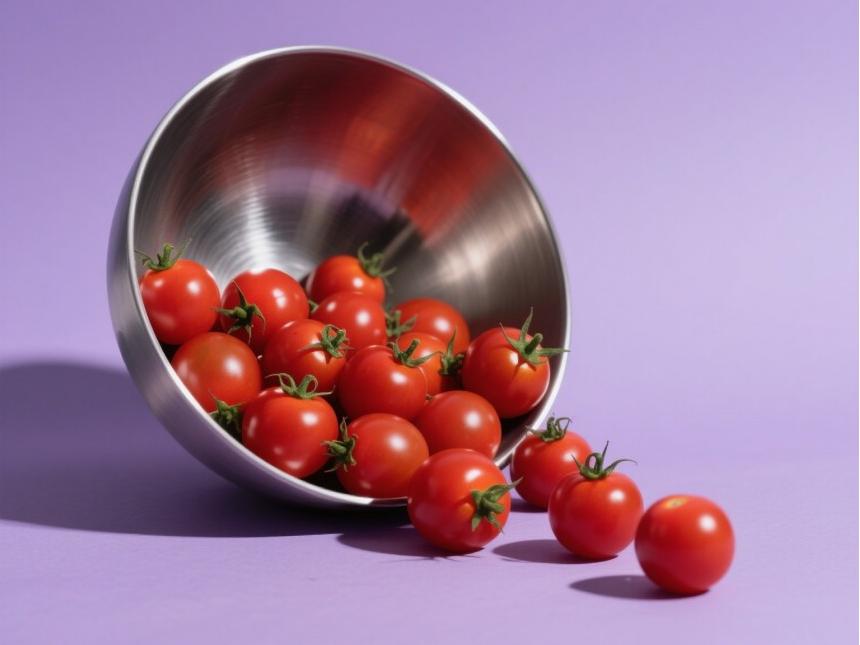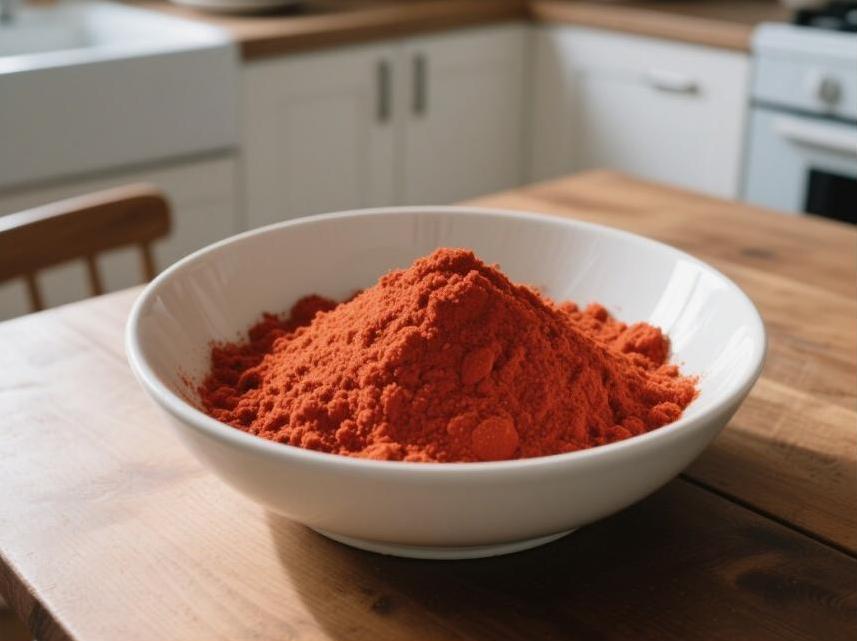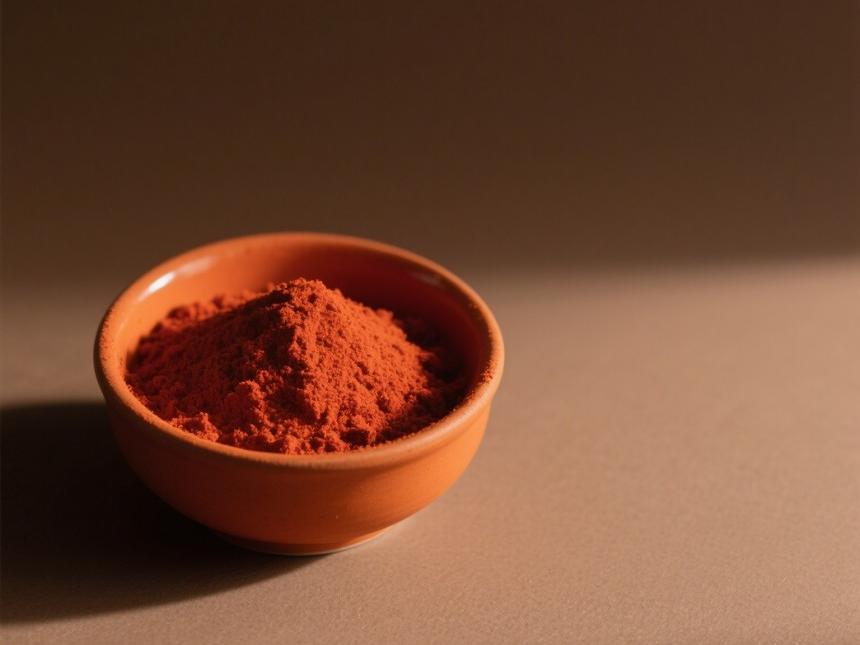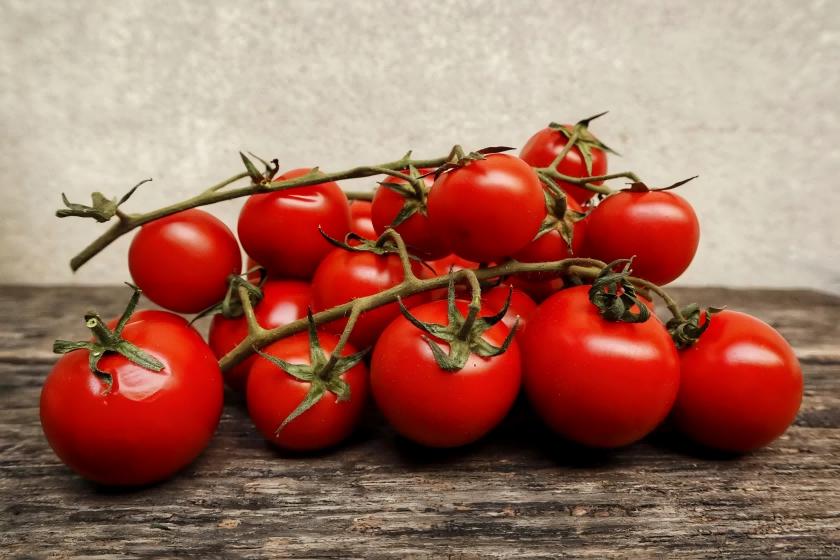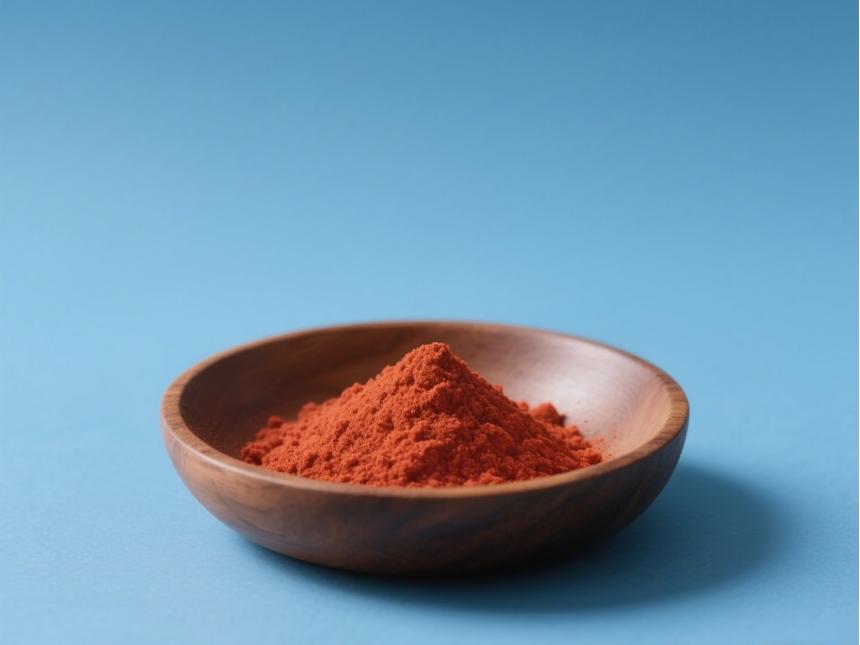What Are the Uses of Tomato Powder?
Tomatoes, are one of the most popular and widely cultivated vegetable crops in the world. It is nutrient-rich, delicious, and bright red in color. Since the beginning of this century, it has gradually become one of the main vegetables in China. According to estimates, global tomato production in 1994 was 77.5 million tons, with China producing 8.935 million tons in 1994, second only to the United States, which produced 12.085 million tons [1].
Tomatoes are a highly valuable raw material in many processed foods, and global demand for tomatoes in the food industry remains consistently high. Mature tomatoes can be consumed fresh or processed into a variety of products, such as tomato puree, tomato paste, tomato sauce, tomato juice, tomato powder, flavored tomato sauce, tomato soup mix, and tomato sauce; unripe green tomatoes are processed into pickles[1].
Tomatoes are native to the tropical regions of South America, with a cultivation history dating back over thousands of years. It is said that Columbus brought them back to Europe during his second voyage to the Americas [2]. Early tomato varieties were golden yellow in color, but with the evolution of varieties, all tomatoes now have a bright red color, with the red pigment primarily derived from lycopene. Lycopene is a major carotenoid in tomatoes. According to current research, lycopene has strong anti-cancer properties [3]. Additionally, tomatoes have a relatively high vitamin C content [4].
Tomatoes are well-suited for processing and can be made into a variety of products with different textures and flavors, many of which are popular products in international markets [5], with tomato powder being a prime example. With the rapid development of the food industry, the demand for tomato powder in the food ingredient market is growing steadily. The processing of high-quality tomato powder can not only address the shortcomings of low-quality tomato powder in the domestic market but also serve as an important channel for export earnings.
1 Current Status of Tomato Powder Production in the Domestic Market
Currently, the quality of tomato powder available in the domestic market is generally poor (produced using hot air drying, which involves prolonged heating, resulting in poor color, flavor, rehydration properties, and susceptibility to oxidation and rancidity) or expensive (produced using vacuum freeze-drying). Additionally, research on tomato powder production in China is virtually nonexistent.
2 Significance of Tomato Powder Production
Tomatoes have a very high water content, reaching approximately 95%, with few other fruits or vegetables having such a high water content. Therefore, for every 1 kg of dried tomato weight, approximately 19 kg of water must be packaged, transported, and stored. For consumers, purchasing 1 kg of dried tomatoes also incurs the cost of approximately 19 kg of water. If tomatoes are processed into tomato powder, significant savings can be achieved in packaging, transportation, storage, and consumption costs [4]. Although tomato concentrates such as tomato paste have removed 3/4 or more of their moisture content, each kilogram of dry weight still contains 2–3 kilograms of water.
Additionally, as the solid content of tomato concentrate increases, its viscosity also increases, making it increasingly difficult to further reduce moisture through evaporation later on, resulting in heat waste and increased product costs. Furthermore, during the later stages of concentration, tomato paste, due to its cellulose content, is prone to burning, and the longer the concentration time, the more the color and flavor deteriorate, severely affecting the quality of tomato concentrate products. Additionally, tomato concentrates with high solid content are prone to quality changes during storage, especially in regions with higher temperatures. If tomato paste is processed into tomato powder, packaging and sales costs can be significantly reduced, thereby offsetting the production costs incurred during drying.
Furthermore, tomatoes have a high water content, thin skins, and are juicy, making them prone to spoilage under microbial action and unsuitable for long-term storage, resulting in increased tomato wastage rates. According to reports, the spoilage rate of domestically produced tomatoes in China reaches as high as 50%. Scientists have been striving to extend their storage life and reduce storage losses [6]. Processing tomatoes into tomato powder can reduce the opportunity for microbial growth, allowing them to be stored at room temperature for extended periods, thereby extending the product's supply season and balancing production and sales peaks.
3 Application Prospects of Tomato Powder
Over the past decade, with the rapid development of domestic and international trade demands, and the improvement of people's living standards, the food industry has also experienced rapid growth. The demand for tomato powder in the food ingredient market and seasoning market has been increasing day by day. High-quality tomato powder can be rehydrated to produce tomato paste, tomato juice, tomato sauce, and tomato soup. Additionally, tomato powder can be used as an ingredient in convenience foods, snacks, and pre-mixed seasonings for soups and sauces [7]. Furthermore, tomato powder can serve as a substitute for tomatoes in special markets such as geological exploration, military field training, border outposts in islands and snowy mountains, winter skiing tourism in Northern Europe, warfare, and aerospace food.
4 Major issues in tomato powder production
During the pre-treatment, concentration, drying, and storage of tomatoes, in addition to physical changes, a series of chemical changes also occur, which affect the color, flavor, nutritional value, rehydration rate, and shelf life of tomato powder. Therefore, during production, it is essential to preserve the original color, flavor, and nutritional components of tomatoes as much as possible to produce products with a long shelf life. Additionally, selecting appropriate packaging materials and storage conditions is also of great importance. Generally, the main issues encountered during tomato powder production are as follows.
4.1 Due to its thermoplastic nature, tomato powder tends to adhere to walls at high temperatures, causing the product to overheat during drying and thereby affecting its color, flavor, and nutritional value.
4.2 Due to its strong hygroscopic nature, tomato powder easily absorbs moisture from the air, increasing its moisture content. When the moisture content is high, the product tends to clump together, and during storage, microbial and enzymatic activity increases, accelerating non-enzymatic browning reactions, thereby causing the product quality to deteriorate rapidly.
4.3 During storage, storage conditions significantly affect the stability of tomato powder's color, flavor, and nutritional value. Therefore, optimal storage conditions must be selected, such as storage temperature, humidity, and the use of inert gases [18].
4.4 During storage, tomato powder may develop an unpleasant flavor, which may be caused by the oxidation of low-fat content or lycopene. Therefore, it is important to address flavor issues resulting from oxidative rancidity.
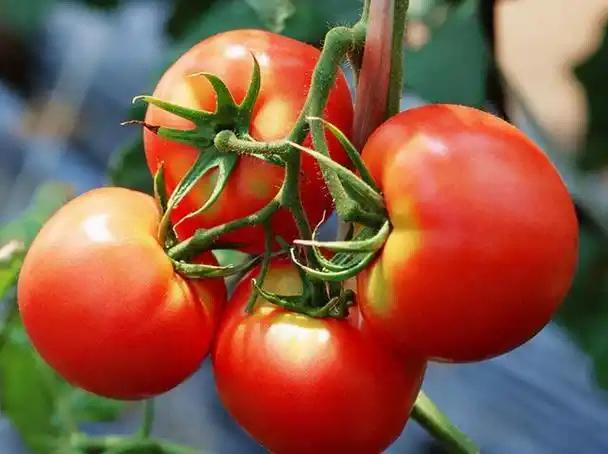
4.5 Different grinding methods used to process tomatoes result in tomato paste with varying viscosities, and the tomato powder obtained exhibits different rehydration properties. Tomato powder obtained using the cold crushing method has most of its pectin degraded, resulting in poor rehydration performance, with sedimentation occurring within 60 seconds. In contrast, tomato powder obtained using the hot crushing method maintains a uniform consistency during rehydration and does not undergo sedimentation. Tomato powder produced using different crushing methods can be used for different purposes, producing tomato powder with varying viscosities to meet market demands. Currently, tomato powder produced using cold crushing, hot crushing, and ultra-hot crushing methods is available in foreign markets, with different final viscosities (during rehydration), but they can be used for different processing purposes.
4.6 During processing and storage, tomatoes gradually darken in color, primarily due to non-enzymatic browning and the oxidation and isomerization of lycopene. Therefore, controlling non-enzymatic browning and lycopene oxidation in products is of significant importance [18].
4.7 The flavor of tomatoes is an important aspect of their quality. The flavor of tomatoes changes during concentration, drying, and storage, and selecting appropriate concentration, drying, and storage conditions is a critical issue.
5 Comparison of tomato powder processing methods
Over the past 40–50 years, numerous drying methods have been developed for tomato drying; however, no single method has been able to produce a product that effectively preserves the physical properties and sensory characteristics (such as aroma, color, and flavor) of tomatoes. While it is possible to retain these characteristics to a greater extent through very expensive processing methods, this significantly increases the product cost.
5.1 Pre-treatment methods
In the drying methods for processing tomato powder, the following pretreatment operations are common to all drying methods (except for the direct drying of tomato slices). The following is a description of these common operations: Select tomatoes, remove those that are unripe or underripe, as well as those with mold spots, insect damage, or physical defects; wash the selected tomatoes, then crush them to remove the skin and seeds, resulting in tomato juice or tomato pulp. The crushing process continues until the particle size reaches the required size. Tomato crushing can be performed using either hot crushing or cold crushing [9]. In recent years, the hot crushing process has been further developed, leading to the emergence of ultra-high viscosity hot crushing and super-hot crushing processes. Hot crushing generally refers to crushing tomatoes and immediately heating them to 80–85°C, then maintaining this temperature for 15 seconds to inactivate pectinase activity and prevent pectin degradation. As a result, tomato powder produced by the hot crushing method has high viscosity when rehydrated, uniform texture, no sedimentation, and excellent stability.
Some literature suggests that during thermal breaking, the temperature should be raised to 104°C and maintained for 15 seconds to completely inactivate pectinase activity. Cold breaking involves breaking tomatoes and then immediately or after a period of time raising the temperature to below 60°C, which facilitates tomato peeling, pectin extraction, and ultimately increases yield. Additionally, after fruit is crushed, the enzymes in the system hydrolyze pectin, enabling the tomato pulp to be concentrated to 30°Brix or higher. Tomato powder processed using the cold crushing method has low viscosity after rehydration and tends to settle, often requiring the addition of thickening agents to stabilize the product [10].
The two crushing processes have the greatest impact on the viscosity of the final tomato powder. Additionally, cold-crushed products have a bright red color, while hot-crushed products are typically dark red; the cold-crushing process better preserves the fresh taste and aroma of tomatoes compared to the hot-crushing process; and compared to the cold-crushing process, the hot-crushing process results in greater lycopene loss. Based on these analyses, it is not appropriate to simply state that one process is better than the other. The specific process to be adopted should be determined based on the product to be produced. And the type of product to be produced should be determined by customer and market demands [11].
After crushing, tomato pulp can be concentrated under atmospheric pressure or under reduced pressure (preferably under reduced pressure), but vacuum concentration yields the best product quality because it minimizes heat loss in the tomato pulp. The extent of evaporation depends on the type of tomato crushing and the drying method used.
5.2 Direct Drying of Tomato Slices [8]
Among many known drying processing methods, direct drying of tomato slices is worth mentioning. Tomato fruits are washed, then mechanically sliced using very sharp knives (sharp blades prevent tearing of the fruit). The tomato slices are placed on trays coated with mineral oil (to prevent product adhesion) and then dried in a tunnel until the product moisture content reaches approximately 4%. The dried tomato slices are then ground into powder using a hammer mill and quickly packed into waterproof containers to prevent moisture absorption, as tomato powder has high hygroscopicity.
It is reported that the tomato slices produced by this simple drying method cannot be rehydrated to their original size and shape (after rehydration), even after soaking in water and boiling, as the product remains collapsed and cannot be restored. Therefore, this product is strictly limited to applications such as dry soup mixes, dehydrated mixed vegetables, and canned soup mixes. Additionally, to obtain a usable product using this drying method, tomatoes with bright red color, high solid content, thin skin, and high pectin content must be used.
5.3 Freeze-Drying Method [8]
One of the most popular drying methods for tomato concentrate is freeze-drying. This method involves freezing the tomato concentrate and then removing moisture in a high-vacuum environment through sublimation. In other words, moisture directly transitions from a solid to a gaseous state and is removed from the material without passing through a liquid phase. As a result, the solid components retain their original structure without damaging their original shape or size. Therefore, freeze-dried particles have a porous structure, retaining the space originally occupied by water without collapsing, which facilitates rapid rehydration of the product.
Although freeze-drying has been applied in industry and the dehydrated products obtained have excellent properties, the drying conditions required (i.e., extremely low temperatures and high vacuum) are very stringent, and the drying equipment is very expensive, resulting in high production costs.
5.4 Expanded Drying Method [8]
To overcome the cost issues of freeze-drying, the expanded drying method was introduced in the 1960s. This method uses hot air for expanded drying, aiming to produce a product similar to that obtained by freeze-drying. Expanded drying typically requires an absolute pressure of 346.58 Pa for dehydration, with material temperatures ranging from 60 to 70°C. Although temperatures may initially reach 90°C, the material temperature may rise from the initial low temperature to the final drying chamber temperature. To achieve a moisture content of approximately 30%, the drying time is typically 90 minutes to 4–5 hours. The product must be cooled before vacuum removal to prevent the expanded structure from collapsing, as the product is thermoplastic.
Expanded drying differs from freeze-drying in two aspects. First, the drying temperature is higher than the freezing temperature, resulting in higher vapor pressure during drying and shorter drying times. The second difference lies in the degree of expansion of the product: expanded drying produces products with a higher degree of expansion, while freeze-drying does not alter the product's volume. The expanded structure of products obtained through expanded drying confers excellent rehydration properties. Although this method is widely used for processing large quantities of vegetable products, when applied to tomato concentrate, if air is not introduced into the concentrate, the concentrate does not expand easily, drying is very slow, and the resulting product has a hard structure, with a volume similar to that of the concentrate, and poor rehydration performance.
However, when air is introduced into the concentrate, the material can be expanded and dried, and the product exhibits satisfactory rehydration performance. However, when using the most modern expansion drying equipment to dry tomato concentrate, the product must be continuously removed during the drying process, expanded outside the drying chamber, and then reintroduced into the drying chamber for further drying. This results in relatively complex control of operating conditions overall, making this drying method less suitable for tomato dehydration and more suitable for the dehydration of mushroom-like products. Additionally, the vacuum conditions required during expansion are costly, leading to higher product prices.
5.5 Spray Drying Method
The most popular drying method for vegetable dehydration is spray drying. Among fruits and vegetables, tomatoes are the most commonly processed into powder using spray drying. During spray drying, very fine droplets come into contact with hot air and are rapidly dried. The particles remain in the drying chamber for no more than a few seconds. The dried product is separated from the airflow using appropriate separation equipment, cooled, and thus avoids excessive heat loss due to prolonged contact with hot air.
When liquid droplets are dried, the material's temperature is maintained at the wet bulb temperature of the drying gas, enabling it to withstand the relatively high dry bulb temperature of the drying gas. This results in minimal thermal loss of heat-sensitive components in the concentrate. Additionally, as moisture content decreases, the reaction rates of processes that may impair food quality slow down. Thus, during the final stage of drying, the drying temperature may exceed the wet bulb temperature without causing significant damage to product quality [12].
The particles obtained through spray drying are typically hollow spherical or spherical fragments. This particle shape is closely related to the excellent rehydration properties of spray-dried powders, making this drying method the most popular among all methods used for drying tomatoes. Commercially available tomato powder may contain additives or be additive-free and can be used to produce tomato juice, tomato paste, tomato soup, and tomato sauce, among other products. Tomato powder processed using spray drying has many advantages, such as low cost, convenience in processing, packaging, transportation, and mixing [13].
Among the aforementioned drying methods, spray drying may be the most suitable method for processing tomato powder, as tomato powder produced by spray drying has high quality and reasonable pricing. However, to obtain high-quality tomato powder, the spray drying chamber must be specially designed to prevent overheating during droplet drying. Additionally, due to its high hygroscopicity, tomato powder requires special handling during processing and packaging to prevent moisture absorption.
Currently, there are several types of spray drying equipment available for processing fruit and vegetable powders. Some use air as the drying gas and operate at moderate temperatures of 75–95°C to increase production speed; others use dehydrated air as the drying gas and operate at lower temperatures (25–30°C). However, all these spray drying equipment used for drying tomatoes are very expensive, increasing the costs required for constructing a factory.
For example, some have used spray drying equipment approximately 80 meters high and 16 meters in diameter for low-temperature spray drying, employing a low-speed rotating spray nozzle for spraying, producing approximately 200 kg of tomato powder every 2 hours. However, these spray drying equipment must use tomato paste obtained through cold crushing for drying. Although the resulting tomato powder has good flowability and does not easily agglomerate, it lacks viscosity when rehydrated and rapidly settles. Therefore, to compete with tomato powder obtained through hot crushing, thickening agents must be added [14].
5.6 Foam Layer Drying Method [15]
In the 1960s, foam layer drying for vegetables gained significant attention. Initially, this method was believed to have more advantages than other drying methods because moisture removal was extremely rapid during foam layer drying, with water separating from the foam bubbles via capillary action, resulting in a porous product structure and very fast rehydration.
The key to this drying method lies in the formation of stable foam, primarily achieved by adding foaming agents such as soy protein, globulin, fatty acid esters, sugar esters, and glycerol monostearate. Patterton Canning Company transformed tomato paste into foam by adding glycerol monostearate, then introduced gas into the dryer at a temperature of approximately 93°C, with a velocity of approximately 100–130 m/s, in a counter-current manner. The drying time depends on the product characteristics and drying conditions, with a typical drying time of 15–18 minutes.
Although the foam drying method produces products with improved flavor and color compared to spray drying and drum drying methods, this method also has its drawbacks. Products produced using this method must be packaged in an environment with relative humidity below 50% to prevent moisture absorption from the air due to the hygroscopic nature of tomato powder.
Additionally, to achieve satisfactory shelf life, packaging materials must be non-permeable to air and moisture, and the product should be packaged in an inert environment to prevent oxidation of tomato components caused by oxygen.
Furthermore, when tomato powder is rehydrated with water, the resulting product exhibits a darker color, which may be attributed to trapped air bubbles in the powder. Additionally, during the concentration of tomato paste and the first stage of drying, most of the original aromatic compounds in the tomato paste evaporate, significantly impairing the sensory characteristics of the rehydrated product. Furthermore, when evaluating the shelf life of the product, it was found that as storage time increased, the tomato powder developed unpleasant flavors, which were related to storage temperature. Upon measurement, it was found that at 0°C, the component with the greatest change in the tomato powder was free amino acids.
5.7 Drum Drying Method [16, 17]
In the 1940s, another drying method was employed, known as drum drying. Tomato powder produced using this method exhibited better quality. By the 1960s, significant improvements were made to this method, primarily to enhance the product's flavor, color, and stability. The improvements included: reversing the direction of the airflow relative to the drum's rotation (counter-current flow); modifying the material collection area to maintain a relative humidity of 15%–20%.
However, this drying method does not truly achieve the goal of drying tomato powder, as the resulting product contains at least 7% moisture content and requires further drying with airflow at 20°C for over 24 hours. If this is not done, the product's color and flavor will deteriorate.
6 Conclusion
In summary, there are many methods for processing tomato powder, and each method has its advantages. However, tomato powder produced by spray drying has good quality (good color, rapid rehydration, and excellent flavor) and is moderately priced. Therefore, spray drying should be the preferred method for producing tomato powder in actual production.
References:
[1] Salunkhe D K, Kadam SS. Handbook of Vegetable Science and Technology. Marcel Dekker Inc, 1999
[2] Du Peng, et al. Process Technology of Fruit and Vegetable Juice Beverages. Agricultural Press
[3] Nguyen Minhthy L, Schwartz Steven J. Lycopene: Chemical and Biological Properties. Food Technology, 1999, 153: 38–45
[4] Goose P G, Binsted R. Tomato paste and other tomato products. Food Trade Press, 1973
[5] Wuxi Light Industry College, Tianjin Light Industry College. Food Technology. Light Industry Press [6] China Food News. 2000-01-01
[7] Wallace B, Van Arsdel B S. Food dehydration, 1983 [8] Lomelin, et al. US Patent No. 5035909
[9] Gould Wilbur A. Tomato production, processing, and quality evaluation. AVI Publishing Company, Inc., 1983
[10] Masters, K. Spray Drying Handbook, 5th ed. Longman, Harlow, UK, London, New York, 1991
[11] Du Yufeng. Crushing Process and Thermal Crushing Process in Tomato Paste Processing. Food Industry and Technology, 1994, 85(5): 10–12
[12] Wuxi Light Industry College, Tianjin Light Industry College. Principles of Food Engineering. Light Industry Press, 1985
[13] Anon. Teams Quality Control with Advanced Processes. Food Engineering, 1970, 42(11): 71–74
[14] Attiyate, Yvonne. Breakthrough in spray-drying improves quality and shelf life. Food Engineering International, 1978, 3(4): 48–49
[15] Ginnette, L. F., et al. Tomato powder by freeze-drying. Food Technology, 1963, 811–813
[16] Hening, Y., Mannheim, C., H. Drum drying of tomato concentrate. Food Technology, 1971, 25: 157–160
[17]Lazar M E, Miers J C. Improved drum-dried tomato flakes are produced by a modified drum-dried process. Food Technology, 1971, 25: 830–832
[18]Lovric T, Sablec Z, et al. Cis-trans isomerization of lycopene and color stability of foam-mat dried tomato powder during storage. Journal of Science and Food Agriculture, 1970, 21 (12): 641–647


 English
English French
French Spanish
Spanish Russian
Russian Korean
Korean Japanese
Japanese